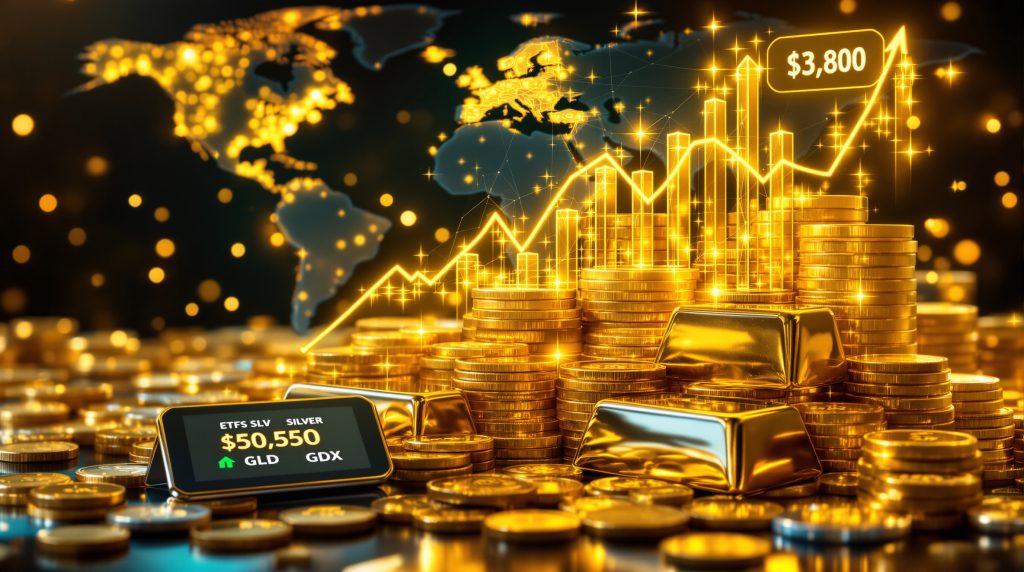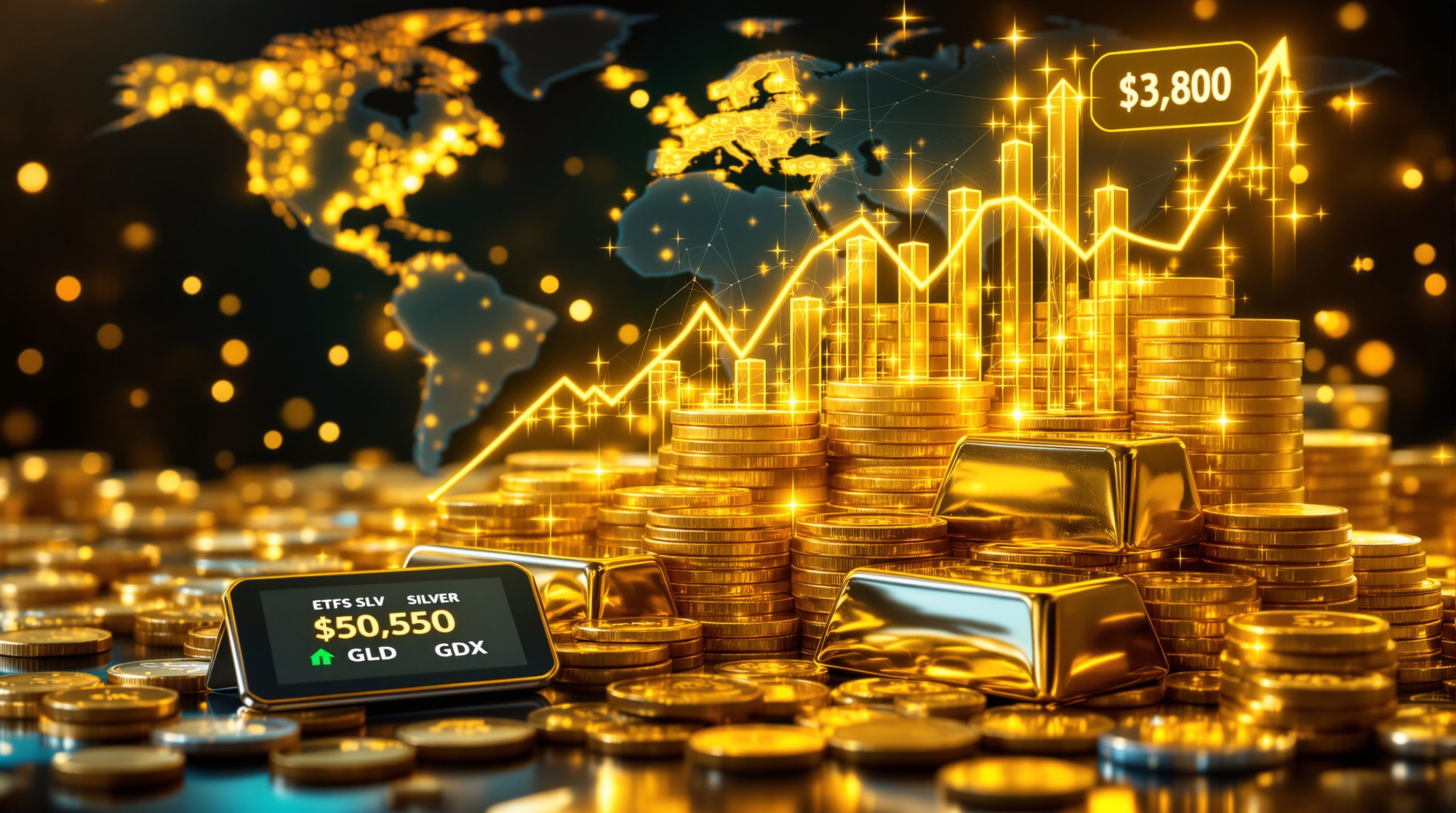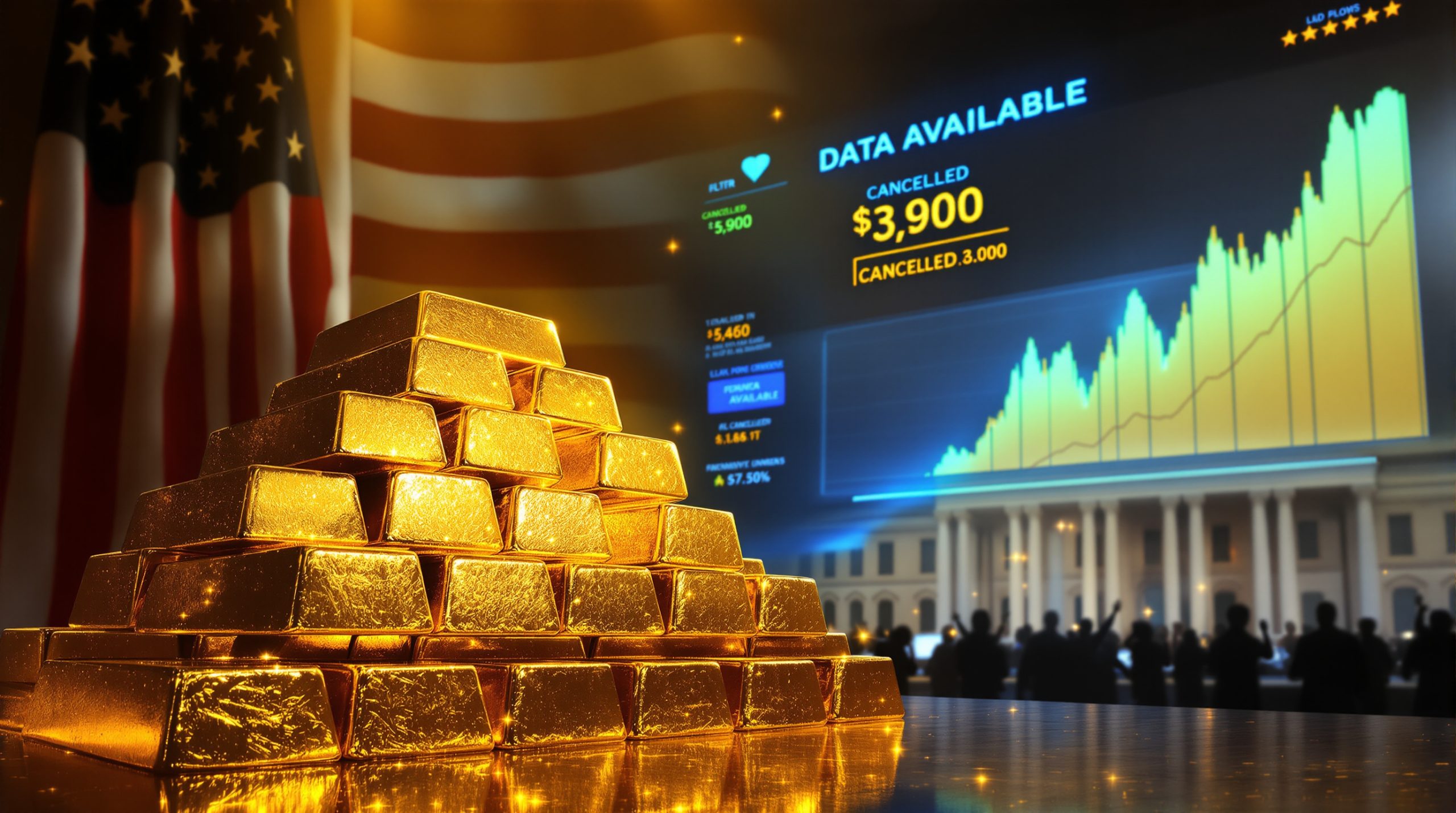The Golden Opportunity: Strategic Investments in Precious Metals Today
The precious metals market is experiencing a remarkable period of growth, with both gold and silver reaching significant price milestones. These movements reflect fundamental shifts in the global monetary landscape and growing investor recognition of precious metals' enduring value as both wealth preservation tools and potential growth assets. For investors seeking to understand these markets better, examining recent gold price highs analysis can provide valuable context.
Recent Price Achievements
Gold and silver have both demonstrated impressive price performance in recent years across various currencies:
- Gold has shown substantial growth in multiple currencies, particularly when viewed over a multi-year timeframe
- Silver continues its upward trajectory, with many analysts watching the approach toward historical highs
- European markets have seen particularly strong performance measured in euros per kilogram
- Canadian dollar gold prices have demonstrated significant appreciation, reflecting global strength
The impressive price action coincides with growing institutional interest, as evidenced by expanding custody services and increasing difficulty in sourcing wholesale quantities of physical metal, particularly silver.
Understanding the Current Precious Metals Rally
Unlike typical market cycles driven primarily by speculative interest, today's precious metals market appears to be fueled by more fundamental concerns. Investors increasingly view physical precious metals as insurance against systemic financial vulnerabilities rather than merely speculative vehicles. Recent silver market squeeze events have highlighted the growing disconnect between paper and physical markets.
Monetary System Dynamics
The current financial landscape features several factors potentially supportive of precious metals:
- Central bank policies globally continue to influence currency valuations
- Debt-to-GDP ratios in major economies remain at historically elevated levels
- Investors increasingly seek tangible assets outside the traditional financial system
These monetary considerations have shifted the psychology of precious metals buyers from speculative trading to wealth preservation.
Physical Market Fundamentals
The supply-demand dynamics in physical precious metals markets show notable tightness:
- Major dealers report significant buying interest across retail and wholesale levels
- Industrial demand for silver continues to provide underlying support
- Physical supply chains face logistical challenges meeting current demand levels
- The differential between paper market derivatives and physical delivery capabilities creates potential market inefficiencies
This physical market tension differs substantially from purely sentiment-driven price movements.
Investment Vehicles for Precious Metals Exposure
Investors have multiple options for gaining exposure to precious metals, each with distinct advantages and considerations. Understanding gold investment strategies can help investors determine the optimal approach for their specific needs.
Direct Physical Ownership
Taking possession of physical precious metals provides the most direct control:
- Coins and bars available in various sizes to accommodate different investment levels
- No counterparty risk compared to paper-based investments
- Storage and security requirements must be considered
- Premium over spot prices for smaller denominations
Many investors view direct ownership as the purest form of precious metals investment, particularly those concerned about systemic financial risks. For those just starting, a beginner's guide to gold and silver investing can provide essential foundational knowledge.
Allocated Storage Programs
For investors seeking physical ownership without personal storage challenges:
- Legal title to specific bars or coins held in secure vaults
- Regular auditing and verification of holdings
- Insurance coverage against theft or damage
- Ability to take physical delivery if desired
- Lower premiums compared to retail purchases
These programs balance the security benefits of physical ownership with professional storage solutions.
Exchange-Traded Products
Investors preferring traditional brokerage account access have several options:
- Gold ETFs providing exposure to gold price movements (GLD, IAU, SGOL, GLDM)
- Silver ETFs tracking silver market performance (SLV, SIVR, PSLV)
- Varying structures regarding physical backing and redemption rights
- Generally lower transaction costs compared to physical purchases
- Potential tax advantages in certain jurisdictions
These products offer convenience but involve varying levels of counterparty risk.
Mining Equities
For investors seeking potentially leveraged exposure to metal prices:
- Major producers with established operations and reserves
- Junior miners offering exploration upside but higher risk
- Sector ETFs providing diversified exposure (GDX, GDXJ for gold; SILJ, SIL for silver)
- Operational expertise and management quality as key differentiating factors
Mining stocks typically amplify both upside and downside metals price movements due to their operational leverage.
Comparing Gold and Silver Investment Characteristics
While both precious metals offer portfolio diversification benefits, they possess distinct investment profiles. Understanding gold–silver ratio insights can help investors determine optimal allocations between these two metals.
Gold's Investment Attributes
Gold has historically served as a premier monetary metal:
- Generally lower volatility compared to silver
- Significant central bank holdings providing market support
- Primary demand drivers include investment and jewelry
- Limited industrial applications compared to silver
- Traditional safe-haven status during periods of market stress
These characteristics position gold as a stabilizing portfolio component focused primarily on wealth preservation. Many analysts continue to provide optimistic gold price forecast data based on these enduring characteristics.
Silver's Dual Nature
Silver offers a hybrid profile combining monetary and industrial characteristics:
- Higher price volatility creating both risk and opportunity
- Substantial industrial demand from electronics, solar panels, and other technologies
- Relatively small market size compared to gold, potentially amplifying price movements
- Growing applications in renewable energy and electric vehicles
- Historical price relationship to gold suggesting potential undervaluation
This dual-purpose nature provides silver with both monetary protection and industrial growth potential.
Historical Performance Patterns
Understanding how these metals perform in different market environments helps inform allocation decisions:
- Both metals have historically served as inflation hedges
- Gold often outperforms during deflationary crises and financial system stress
- Silver typically shows greater percentage gains during precious metals bull markets
- The gold-to-silver ratio (the amount of silver needed to purchase one ounce of gold) provides relative valuation insights
- Mining equities often lead physical metals in both rising and falling markets
These historical patterns, while not guarantees of future performance, offer useful context for investment decisions.
Essential Considerations Before Investing
Effective precious metals investing requires thoughtful planning beyond simple buying decisions. According to Morgan Stanley's decision guide for investing in gold and silver, there are several key factors investors should consider.
Strategic Portfolio Integration
Precious metals can serve multiple portfolio functions:
- Wealth preservation during currency devaluation
- Portfolio diversification with low correlation to traditional financial assets
- Crisis insurance against systemic financial risks
- Potential growth component, particularly with silver and mining shares
- Generational wealth transfer vehicle due to historical longevity
Rather than viewing metals as standalone investments, consider their role within your broader financial strategy.
Storage Security Solutions
Physical ownership requires careful consideration of storage options:
- Home storage (safes, hidden storage) offering immediate access but security risks
- Bank safe deposit boxes providing institutional security but potential access limitations
- Professional vault storage with insurance and audit verification
- Allocated storage programs with specific bar ownership
- Geographic diversification across multiple storage locations
The optimal solution depends on your security requirements, access needs, and risk tolerance.
Authentication Protocols
Ensuring authenticity is critical when purchasing physical precious metals:
- Buy from established dealers with strong industry reputations
- Verify proper hallmarks, mint marks, and expected physical characteristics
- Consider assay testing for large purchases
- Maintain proper documentation of ownership and authenticity
- Understand the specific security features of modern bullion products
Counterfeit protection becomes increasingly important as metals prices rise.
Tax Treatment Awareness
Tax implications vary significantly by jurisdiction and investment vehicle:
- Physical metals may face different tax treatment than financial products
- Some jurisdictions exempt certain precious metals products from sales taxes
- Capital gains treatment varies across countries and product types
- Self-directed retirement accounts may offer tax advantages for precious metals investing
- Estate planning considerations for physical metals holdings
Consulting with tax professionals familiar with precious metals investing can help optimize tax efficiency.
Market Outlook and Future Considerations
While specific price predictions remain speculative, several factors may influence the precious metals market trajectory.
Supportive Fundamental Factors
Multiple elements appear to support the continued strength in precious metals:
- Central banks continue to face limitations in monetary tightening capabilities
- Physical demand remains robust across retail and institutional channels
- Supply constraints persist, particularly in the silver market
- Growing investor recognition of systemic financial vulnerabilities
These fundamentals suggest the potential for sustained strength beyond typical market cycles.
Risk Factors to Monitor
Despite positive fundamentals, investors should remain aware of potential challenges:
- Short-term price corrections within broader uptrends
- Mining production increases in response to higher prices
- Changes in industrial demand patterns, particularly for silver
- Regulatory interventions affecting precious metals ownership or taxation
Maintaining realistic expectations and understanding these risk factors helps develop a balanced investment approach.
Long-Term Perspective
The most successful precious metals investors typically maintain a long-term outlook:
- Historical wealth preservation properties transcend short-term price movements
- Monetary metals have maintained purchasing power over centuries
- Cyclical price movements offer strategic entry points for long-term positions
- Physical ownership removes the timing pressures of paper investments
This historical context provides valuable perspective during periods of market volatility.
Building a Balanced Precious Metals Strategy
A thoughtful approach to precious metals investing combines multiple elements to balance opportunity and risk.
Diversification Within the Sector
Consider exposure to various precious metals assets:
- Core position in physical gold for stability and wealth preservation
- Silver allocation for growth potential and industrial demand exposure
- Selective mining stocks or ETFs for potential outperformance
- Regular accumulation strategy to average purchase prices over time
This diversified approach provides exposure to different aspects of the precious metals market.
Investment Timeline Alignment
Different precious metals vehicles may be appropriate for different time horizons:
- Physical metals for long-term wealth preservation (5+ years)
- Mining stocks for medium-term growth potential (1-5 years)
- ETFs for tactical allocation and portfolio balancing
- Trading positions for short-term market opportunities
Matching investment vehicles to your time horizon improves both results and psychological comfort.
Strategic Entry Approaches
Given the significant price appreciation already seen, strategic entry methods include:
- Dollar-cost averaging to build positions gradually
- Partial position initiation with reserves for potential corrections
- Focus on relative value opportunities between different metals
- Allocation during periods of price consolidation
These approaches help manage the psychological challenges of entering markets at elevated price levels.
Common Questions About Precious Metals Investing
Is it too late to invest in precious metals at current prices?
While prices have risen substantially, the fundamental factors driving current demand appear structural rather than speculative. The motivations behind today's precious metals buying focus on monetary system concerns that may persist for an extended period. Consider a gradual accumulation strategy rather than attempting to time market peaks.
How much of my portfolio should be allocated to precious metals?
Traditional portfolio allocation recommendations suggest 5-10% in precious metals for diversification purposes. However, individual circumstances, risk tolerance, and economic outlook may justify different allocations. Consider your personal financial situation, existing portfolio composition, and long-term objectives when determining appropriate allocation levels.
Which is better for new investors: gold or silver?
Gold typically offers more stability and lower storage costs per dollar invested, making it suitable for conservative investors seeking wealth preservation. Silver provides greater potential percentage gains but with higher volatility and storage requirements, appealing to growth-oriented investors comfortable with price fluctuations. Many investors maintain positions in both metals to balance these characteristics.
Should I buy physical metals or use financial products like ETFs?
Physical ownership provides maximum security against financial system risks but requires storage solutions. ETFs offer convenience and liquidity but involve counterparty risk. Your decision should reflect your primary investment objectives – whether capital appreciation, trading flexibility, or systemic risk protection. Many investors utilize both approaches to balance these considerations.
What are the warning signs of a potential market top?
Unlike typical market bubbles characterized by widespread speculation and price chasing, the current precious metals market appears driven by fundamental monetary concerns. Traditional bubble indicators like taxi drivers offering investment tips may be less relevant in this context. Instead, watch for dramatic changes in central bank policies, substantial increases in mining output, or significant shifts in industrial demand patterns.
Final Thoughts: The Strategic Role of Precious Metals
Gold and silver investing opportunities have served as monetary anchors for centuries, maintaining their value through wars, depressions, currency debasements, and technological revolutions. Their enduring appeal stems from physical scarcity, industrial utility, and independence from financial system counterparties.
Rather than viewing precious metals as speculative vehicles, consider their strategic role within a comprehensive financial strategy. Whether as wealth insurance, portfolio diversification, or potential growth assets, these monetary metals continue to offer unique benefits unavailable through conventional financial instruments.
In today's complex financial landscape, the ancient wisdom of precious metals ownership remains surprisingly relevant – not as a replacement for modern financial planning, but as a complementary component addressing specific risks and opportunities in an increasingly uncertain world.
Ready to Catch the Next Major Mineral Discovery?
Discover how significant mineral discoveries can generate substantial returns by exploring Discovery Alert's dedicated discoveries page, where our proprietary Discovery IQ model instantly alerts investors to noteworthy ASX mineral discoveries, transforming complex data into actionable insights for both short-term traders and long-term investors.




